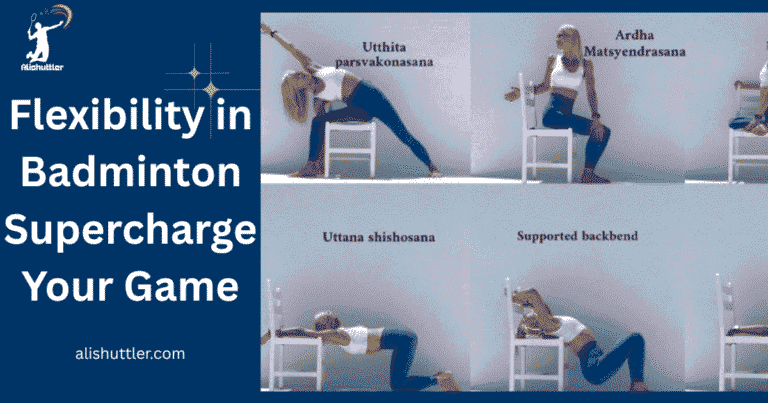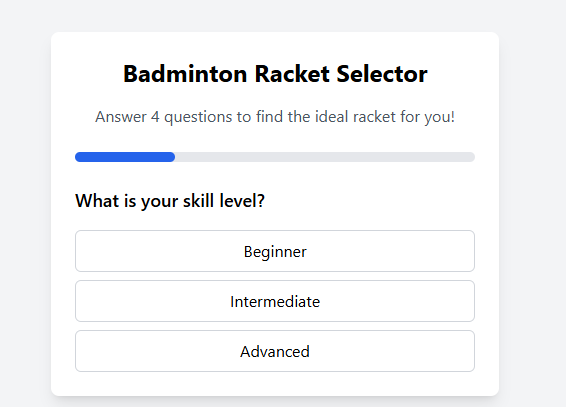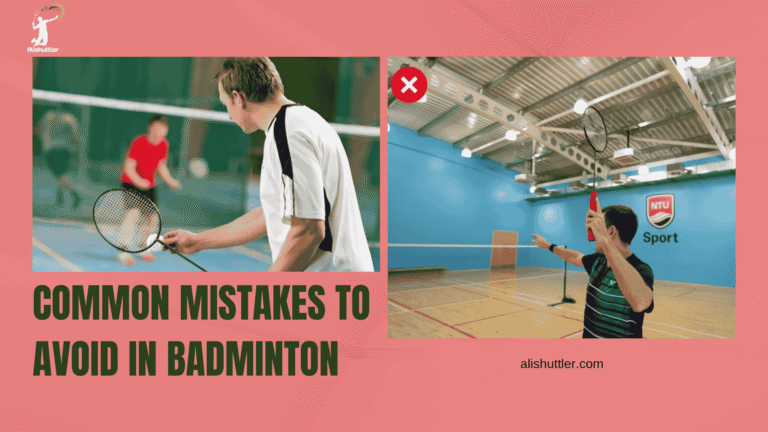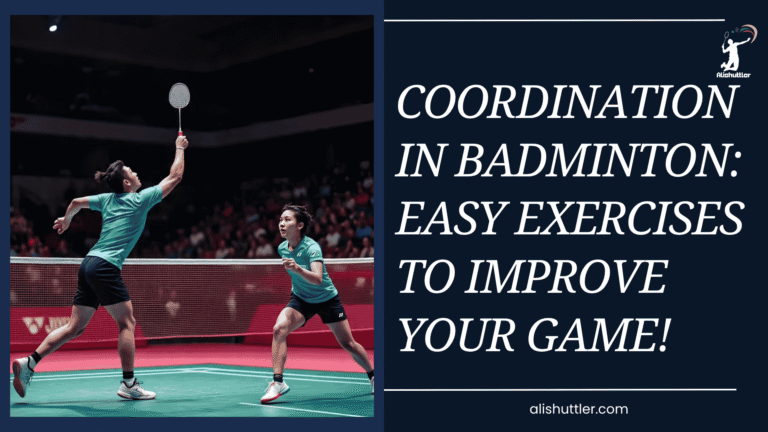Badminton exercise equipment means gear and tools that help people play badminton and improve fitness while training or working out. Badminton is a unique sport that can help improve physical strength and mental sharpness.
As they play together, people strengthen their sense of teamwork and friendship, giving the game a dynamic social aspect. The sport is a great way to improve hand-eye coordination and reflexes, and it’s effective for people of any age.
Badminton isn’t only a recreational pastime—regular play promotes cardiovascular fitness, muscular strength, and endurance. By including badminton in overall fitness regimens, individuals are more likely to achieve their wellness objectives and monitor their progress effectively.
Here’s how we’ll tackle the best equipment for beginners and advanced players. It will also offer advice on what will work best in the U.S.
Why badminton training gear?

Badminton training equipment provides several distinct benefits to players of all skill levels. The right equipment goes a long way towards determining the tone of daily practice, creating a safer and more productive environment. Proper training gear can make a difference in developing your skills, avoiding injuries, and building confidence.
From a public court in Los Angeles to the local fitness center, having the right equipment matters!
Boost agility and coordination.
Agility training with speed ladders and cones will increase your players’ foot speed and body control. These products allow players to develop proper footwork patterns, maximizing movement to help players move more efficiently while covering the court more effectively.
These lateral movement drills help develop muscle memory for side-to-side movement, which is essential for returning challenging cross-court shots.
Agility ladders improve overall coordination, especially when hitting an advanced shot such as a drop shot or smash.
Unique fitness benefits
Badminton is a relatively low-impact sport, which makes it easy on the joints while allowing you to burn calories and maintain a healthy weight. Each time you play, you actively stretch your muscles and grow your range of motion, which helps prevent soreness and improves overall flexibility.
Numerous players have reported that playing regularly reduces stress and increases concentration, offering both emotional and physical health advantages.
Sharpen skills off-court
Training aids such as Badminton Rebound Nets allow players to practice alone, sharpening their skills without needing a partner. Viewing instructional videos unlocks a wealth of new strategies and tactics while giving valuable insight into the breakdown of advanced moves.
Target drills with cones or other markers improve shot accuracy. Additionally, mental training, including visualization, can improve athletes’ ability to focus and perform on game day.
Core strength and balance gains
Exercises that strengthen core muscles, such as planks or bridges, help enhance balance and stability. Balance boards train athletes to maintain balance while in motion or swinging.
Exercises that train balance may help players stay centered through quick-paced rallies. A well-developed core is closely related to improved athletic performance.
Essential badminton exercise equipment
Selecting the best badminton exercise equipment allows players to train more intelligently rather than simply exerting more effort. Together, these gear pieces influence how athletes can move, handle the shuttlecock, and develop the strength required to perform on court.
After all, quality > quantity. Quality gear that is appropriate and durable goes a long way in having a positive impact. That’s particularly true for athletes who train frequently or intensely.
1. Badminton self-practice kits
- Rackets
- Shuttlecocks (feather and synthetic)
- String packs (with options for different tensions)
- Grips (various types for comfort and tackiness)
- Training targets or nets
Players can change string tension or grip size according to their skill level and comfort. Beginners are more comfortable using lower string tensions around 19-20 lbs for more control. Alternatively, more experienced players can raise the tension over 25 lbs to add more power.
Self-practice kits allow athletes to train stroke accuracy and consistency from home, making solo training safer and more convenient.
2. Agility ladders and cones
Agility ladders increase foot speed and assist with rapid changes in direction. Cones provide an even greater versatility, allowing players to run drills challenging their balance and agility.
Both of these tools would easily fit into warm-ups or full sessions. They’re effective for beginners and pros alike and great for training quick footwork in small areas.
3. Resistance bands for power
Resistance bands help to develop the strength needed to hit powerful smashes and form fast footwork. Specific exercises help strengthen the wrist, forearm, and shoulders.
With various resistance levels, bands work for every exercise. They’re incredibly light, making it easy to train anywhere.
4. Footwork training mats
Colored mats make it easier for players to step with the correct foot and improve speed. Drills on these mats develop body balance and memory of movement patterns.
With proper footwork, you’ll be able to cover the court much quicker while reducing the chance of injury.
5. Shuttlecock feeding machines
Feeders allow players to work on shot repetition to build skill and accuracy, and speed settings allow for a personalized workout.
They’re great for individual or team practice sessions and aid in offensive and defensive practice drills.
6. Wrist and forearm trainers
Strong wrists and forearms not only provide players with improved grip but can also create sharper shots. These trainers can be incorporated into warm-ups, making injury prevention easy and effective.
Increased strength translates into increased power and improved control, particularly for smashes.
Other helpful equipment would be balance boards to strengthen the ankle, and selecting an appropriate racket weight to allow faster swings. Each aspect, whether the grip tackiness or the shuttlecock type, affects performance.
Choose your ideal practice tools.
Selecting the best badminton training aids begins with understanding your specific needs and the type of environment you’ll be using them in. Each player brings their objectives to the table.
Consider your experience level, training area, and budget before buying!
Match gear to skill level
Match gear to skill level. Novices benefit from lighter rackets, nylon shuttlecocks that don’t break easily, and a grip enhancer to improve hand control. These simple tools go a long way in helping to develop those good habits.
When you’re more advanced, you might want to upgrade to more durable rackets. A footwork ladder or a shuttle launcher can also take your training to the next level!
As players advance, they should use higher-level equipment. They like high-end shoes that use mesh or synthetic leather to improve breathability and select strings optimized for power or control.
Always progress in small increments and consult a coach or experienced teammate when deciding if your gear is appropriate.
Define your training goals.
Well-defined objectives make it easier to choose appropriate tools. If your goal is increased speed of footwork, a footwork ladder or shuttle launcher can be beneficial.
To achieve optimal hand control, practice with a practice handle equipped with a proper grip. Monitor your progress regularly and replace tools as your ability advances.
Targeted training in line with your specific objectives is one of the best ways to stay engaged and committed long term.
Consider your practice space.
Consider what space you practice in. If space is limited, prioritize smaller, more portable options such as a grip trainer or portable net.
Consider traffic flow to avoid accidents with bystanders, and ensure your space is clean and safe—there should be no stray equipment on the ground. A dedicated place to practice goes a long way toward keeping you on track.
Plus, it decreases your chance of injury, too!
Budget-friendly equipment options
- Basic rackets ($20–$40)
- Shuttlecocks (nylon, under $20 per pack)
- Used shoes are in good shape
- DIY footwork ladder (tape or rope)
- Second-hand nets
Beyond the basics: innovative gear

The badminton gear industry is constantly evolving due to the constant advancement of technology and innovative thinking. Players in the U.S. and worldwide can now use the creative tools. These new-fangled devices are a massive leap past traditional market rackets and shuttlecocks!
Developmental athletes often train on their own time to maximize value from each session. Innovative gear like this is one of the best ways to ensure that off-game days are productive and effective.
Smart sensor technology
Today’s smart sensors can measure essential stats such as swing speed, total shot count, racket angle, and more. These pocket-sized devices, which clip onto the racket or wrist, transmit instant data directly to a smartphone or tablet.
Using the golf player’s example above, players will be able to identify weaknesses in their technique and adjust accordingly through minor modifications. Devices developed specifically for badminton analyze data to improve footwork or smash power.
With data-driven training, players can easily understand where they are and what they should focus on next. When used regularly, sensors provide an excellent basis for tracking progress over time.
Virtual reality training aids
Virtual reality (VR) training aids take training to the next level. Players wear a headset and are transported into an arena-like environment, even if they are training solo from home.
VR can guide users through new drills, simulate difficult opponents, or assist in training reactionary responses. It’s a very immersive, engaging, hands-on method of trying to focus on tactics and decision-making.
VR training is perfect for both rookies and veteran gamers, simplifying the process of finding the right fit for every skill level!
Multi-functional training stations
Or, a multi-functional training station where players can do cardio, strength, and skill drills all in one area. These configurations can feature resistance bands, agility ladders, and target nets.
With a versatile station, training major muscle groups and varying the workout is simple. Space and budget are important considerations, so players should select stations appropriate for their needs and the size of space available at home.
Providing convenient, multi-function stations encourages the development of positive, time-saving habits.
Innovative training: injury prevention focus

In badminton, injury prevention is not a box to check off. It’s essential not only for player retention but also to protect those who begin at a young age or play the sport more regularly. Training smart includes training with appropriate equipment to reduce risk and assist in monitoring health.
Smart gear can also help identify early warning signs, such as changes in posture or muscle fatigue. Training in crowded urban gyms or community clubs further compounds this risk. Both high training loads and early sports specialization have been shown to greatly increase the risk of injury.
Recovery tools aren’t luxury items; they’re necessary to keep muscles healthy and prepared to maintain longevity in the sport.
How gear reduces injury risk
This is why wearing the right shoes is so important. These running shoes are designed to offer top-notch traction and cushioning. They prevent ankle and knee sprains and impact—common mechanisms in elite players who experience 85% of all injuries below the knee.
Protective padding, such as knee sleeves or ankle braces, can provide additional support, particularly when practicing during workouts and drills. Fit and comfort considerations are essential because too loose or too tight gear can lead to blisters or falls.
Frequent racquets, grips, and shoes inspections identify wear that may cause injury.
Biomechanics of safe training
The biomechanics of smart training and injury prevention focus on prioritizing technique over speed to reduce the risk of overuse injuries, which account for the majority of badminton injuries. Understanding proper body mechanics when striking a shot or lunging for a shuttle minimizes the impact.
Coaches can identify unwanted habits and modify training programs accordingly. Swiss ball training improves overall balance and quality of movement. This change goes a long way towards preventing training errors that lead to injuries.
Warm-up and cooldown tools
- Resistance bands
- Jump ropes
- Stretching straps
- Foam rollers
- cooldownalls
Stretching tools like foam rollers or massage sticks enhance cooldowns and increase range of motion, while sports-specific warm-ups are cooldowns for badminton practice. These effectively reduce injury rates and aid in recovery for badminton players.
My take: maximizing your gear

How you use your badminton equipment can dramatically improve the way you’re training. As for implements, players can maximize their practices when they have a clear intention with every tool. Your gear should develop along with you!
Changing rackets, strings, or shoes as your game evolves allows you to better stay in step with your development. It’s wise to experiment with various tools, since what fits one player perfectly might not fit another. Discussing shop with other heavy hitters provides an abundance of wisdom.
You can talk to each other, compare notes, and share what you’ve learned about what works!
Integrate gear into workouts.
Integrating gear into workouts is essential to change how we use our gear. For instance, you can vary shot speed and control by alternating between a heavy, classic racket and a light one. Deploy a footwork ladder to quicken your feet.
Test your reflexes against both drops and clears with an on-court shuttle launcher! Integrating fun tools such as balance boards and half balls to enhance ankle strength with traditional agility drills provides consistent gains.
This one-two punch makes your workouts dynamic and impactful! Tailor your drills to what you have available—some of the best sessions can be as simple as cones and a shuttlecock.
Drills for specific improvements
- Ladder drills for footwork and fast direction changes.
- Serve practice with rackets of varying weights (80g–100 g+).
- Smash drills using power rackets with thicker strings.
- Reaction drills with shuttle launchers.
- Close-range control drills with thinner strings for accuracy.
By incorporating various badminton training tools into your routine and checking in on the results, you’ll quickly identify what’s working well.
My favorite equipment combos
Combining a lightweight mesh shoe with a footwork ladder will have you faster than ever with nice breezy feet. The higher-control rackets with thin strings are excellent at the net.
A heavier racket with thicker gauge strings will provide more power on smashes. Experimenting with different combos prevents training from becoming monotonous and allows you to discover what works best with your style.
Listen to your body constantly.
When your legs get heavy, change the effort or stop and rest. Listening to your body at all times will prevent injuries, and rest can lead to true gains.
Having a conversation with a running coach or healthcare professional when pain persists is your best bet.
Conclusion
Badminton exercise equipment will improve your performance and even save you from injury. With the proper footwear, badminton rackets, and badminton grip, your training becomes more fluid and your performance advances. Resistance bands, agility ladders, or even a foam roller are great tools to keep your body limber and quick.
Smart picks result in fewer aches and more enjoyment with each match. Even Los Angeles players know how fast games can turn. As our ambassadors see, they know just how vital gear is, from the real gym to the backyard badminton rally. In a nutshell, experiment with what works best for you and your work. What’s the one piece of gear that you first discovered that had an impact on your game? Share your tales or advice in the comments—let’s keep each other as fresh and prepared as possible for that next battle.
Frequently Asked Questions
What equipment do I need to start badminton workouts at home?
To get started you will need a good badminton racket, shuttlecocks, badminton net set and non marking court shoes.
Resistance bands and agility ladders are great for increasing footwork and strength.
Are there specific shoes for badminton in the U.S.?
Are badminton specific shoes available in the U.S.? Yonex, Asics, and other top badminton brands can often be found at big name U.S. Sports retailers.
How can I improve my strength for badminton?
Train with resistance bands, light dumbbells and/or a medicine ball.
These exercises develop core, arm, and leg strength, essential for generating shot power and maintaining fast court speed.
Where can I buy badminton exercise equipment in Los Angeles?
Check out local sporting goods stores like Dick’s Sporting Goods or shop online at Amazon and Badminton Warehouse for fast U.S. Shipping.
Is a home badminton net worth it?
Yes! A portable net is inexpensive and very user-friendly.
You can train just about anywhere—even garages, driveways, or backyards are ideal here in L.A.
What’s the best way to practice badminton footwork?
Agility ladders and cones are our favorites.
They’re the perfect way to enhance your speed, balance, and court coverage—all necessities for any competitive badminton player.
Can I use regular gym equipment for badminton training?
Definitely, in-fighting aside.
Jump ropes, resistance bands, and medicine balls all help increase overall fitness and agility to stay quick on the court.
Here’s how you can improve your game without court-specific equipment!






